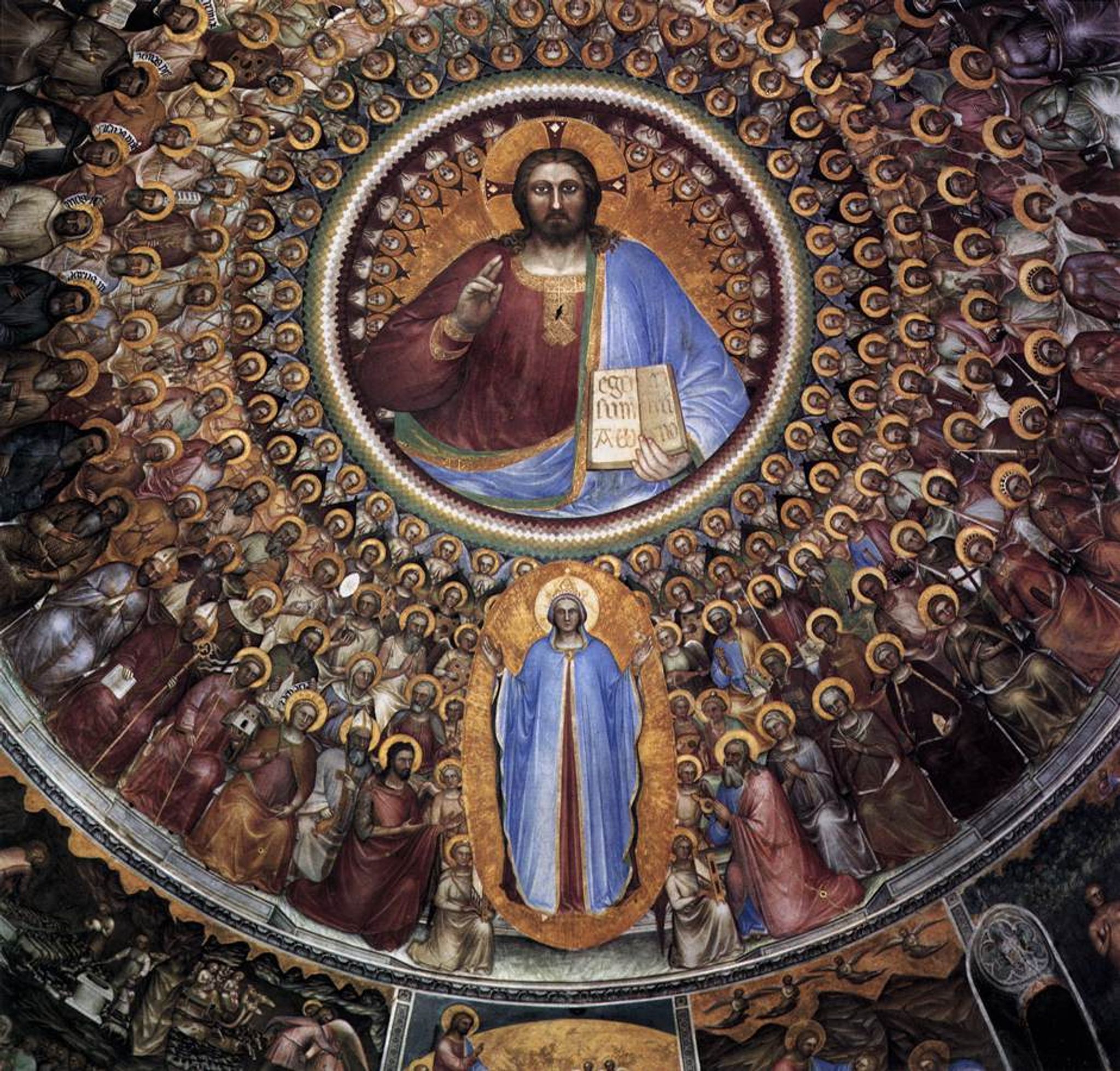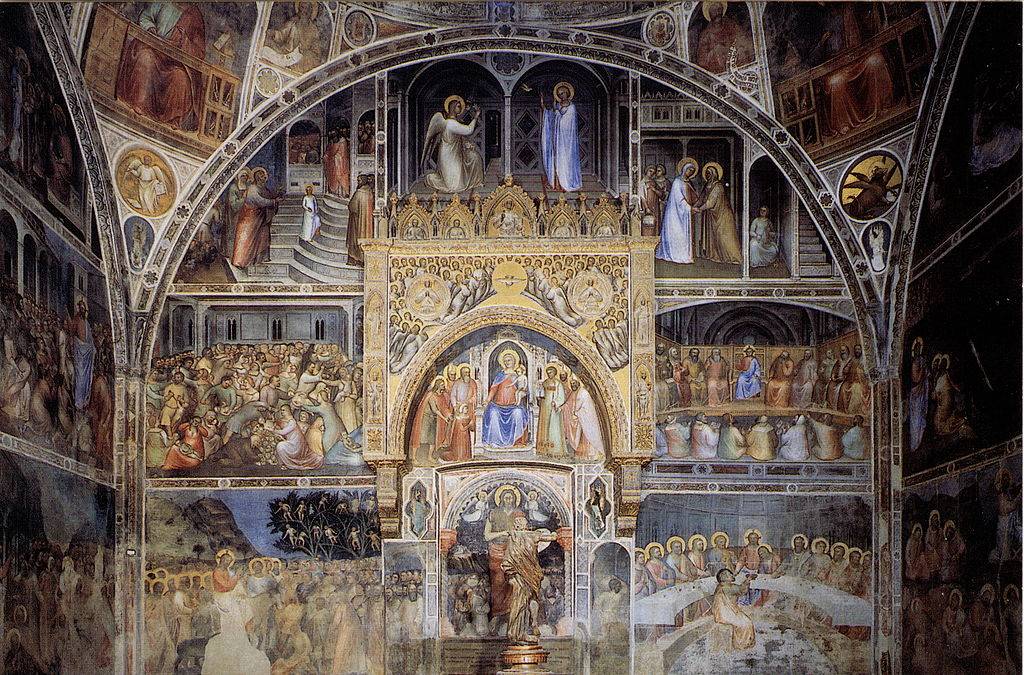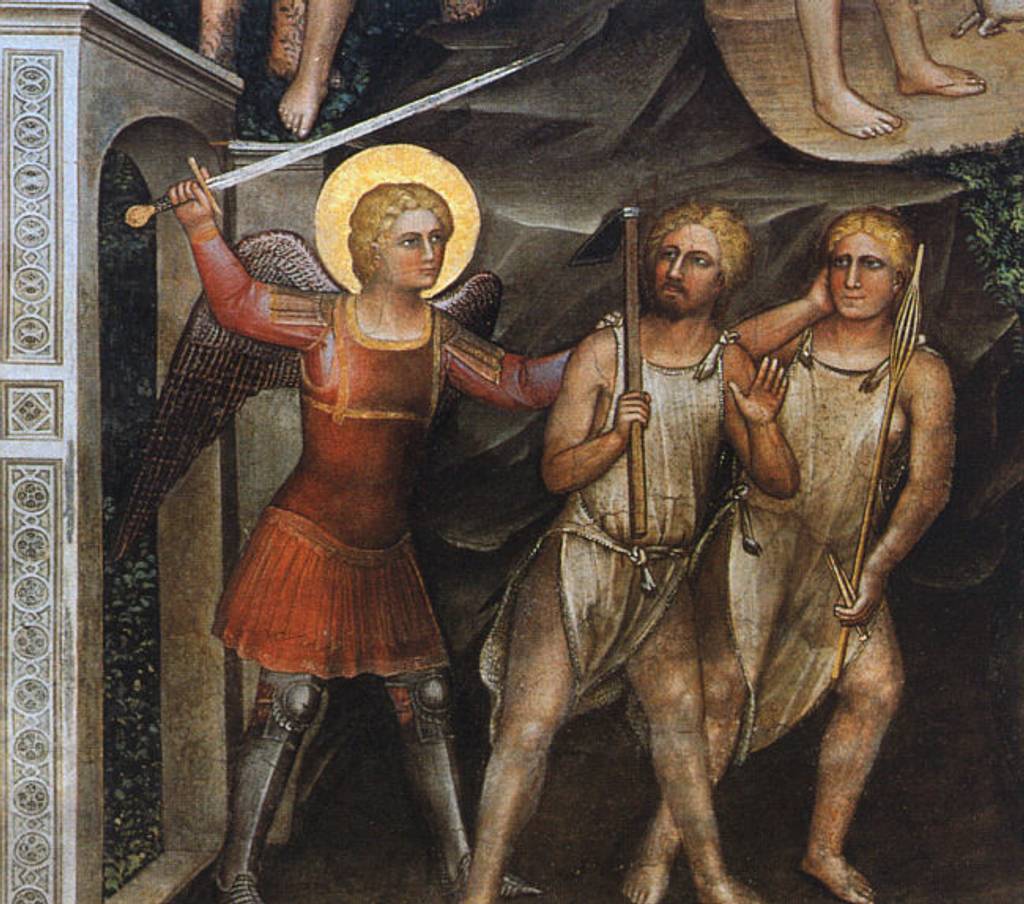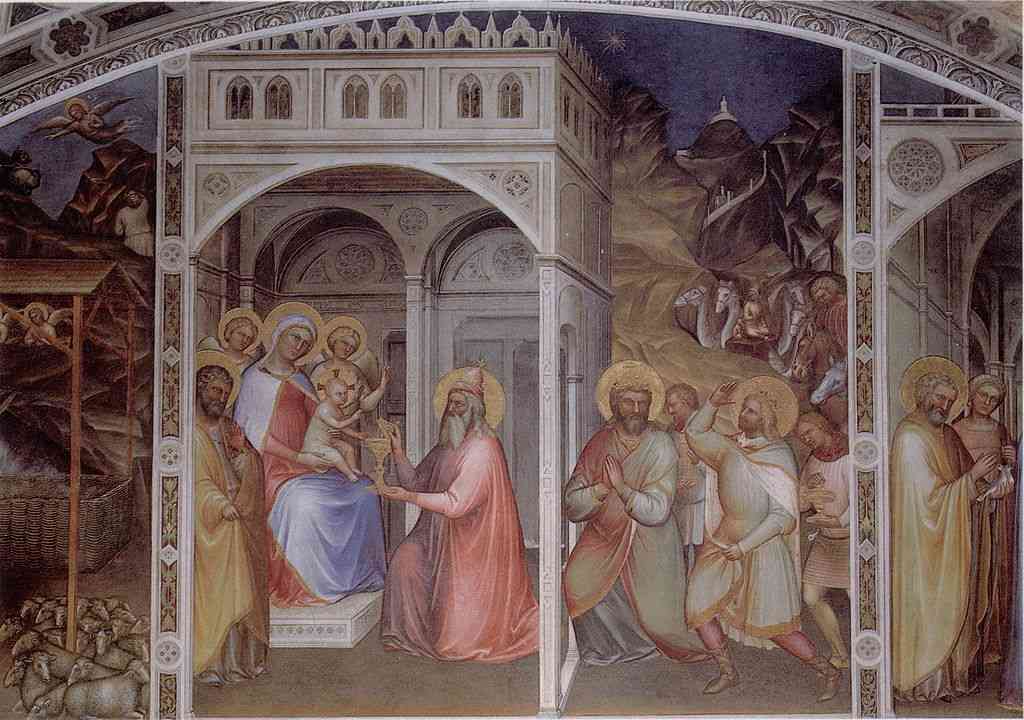Cathedral Baptistery
The masterwork by Giusto de' Menabuoi, the frescoes are inspired by scenes from the Old and New Testaments, which culminates in the splendid image of Christ in Paradise

In the heart of Padua opens up Piazza Duomo, one of its main squares characterised by the silhouette of the Cathedral, with the Baptistery and the Bishop's Palace flanking the square.
The Baptistery of the Cathedral of Padua, dedicated to St. John the Baptist, was built in the 12th century in Romanesque style. It is a square establishment covered by a large dome with the apse emerging from the east side, surmounted by a smaller dome.
It was restored by Francesco I da Carrara two centuries later and adapted as a mausoleum for him and his wife, Fina Buzzaccarini. The decorations were commissioned to Giusto de' Menabuoi, who, after finishing his work here, was employed to paint the Chapel of the Blessed Luca Belludi in the Basilica of Saint Anthony.
The baptismal font located in the centre of the Baptistery is the work of the sculptor Giovanni da Firenze and replaced the tomb of Francesco I da Carrara, which was destroyed after the fall of the House of Da Carrara and the rise of the Serenissima in 1405.
The fresco cycle
The interior was frescoed between 1375 and 1378 by the Florentine painter Giusto de' Menabuoi, court painter of the Carrara family. The Florentine artist created his masterpiece here, one of the fourteenth century's most spectacular and best-preserved pictorial cycles. The fresco cycle represents an evolution of illusionistic spatiality inspired by Giotto's work on perspective in Scrovegni Chapel.
It is a meaningful example of a work commissioned by a female patron, Fina Buzzaccarini, wife of Francesco I da Carrara, Lord of Padua. This peculiarity is reflected in the episodes where the rendering of feelings and expressiveness are interpreted by Giusto according to a feminine sensibility while always keeping alive the celebratory intent of the paintings.
The artist depicted scenes and figures from the Old and New Testaments in a relatively limited space. The space entirely covered with frescoes cancels the borders between architecture, painting, and sculpture. In fact, fresco painting affects every little space of the surface, even invading architecturally unusual areas, such as the intrados of the arches.
In the great dome of the Baptistery is represented the Paradise, in the centre of which Christ Pantocrator stands with the book of the Holy Scriptures in his hand. Around him, arranged in concentric circles, are the prominent figure of the Madonna and the ranks of angels and saints.
Under the dome are depicted 33 episodes taken from the book of Genesis, while on the walls are illustrated the Stories of St. John the Baptist, Mary, and Christ, taken from the Gospels. The Evangelists flanked by the Prophets find space on the pendentives.
The main altar is surrounded by 43 panels representing scenes from the Apocalypse of St. John, while the dome of the apse depicts The Pentecost.
Giusto also decorated the altar with a magnificent polyptych, a wood panel painted in tempera. In the centre, The Madonna and Child are depicted while various figures of Saints are inserted on the sides.
We welcome all contributions, no matter how small. Even a spelling correction is greatly appreciated.
All submissions are reviewed before being published.
Continue to changelog-

© 'Giusto de' menabuoi, paradiso (detail), 1376-78, battistero di Padova' by Wikimedia Commons is licensed under CC PDM 1.0 Attribution copied to clipboard Failed copying attribution to clipboard -

© 'Giusto de' Menabuoi' by YukioSanjo is licensed under CC BY-SA 4.0 Attribution copied to clipboard Failed copying attribution to clipboard -

© 'Cacciata di Adamo ed Eva, Battistero di Padova' by Wikimedia Commons is licensed under CC PDM 1.0 Attribution copied to clipboard Failed copying attribution to clipboard -

We welcome all contributions.
All submissions are reviewed before being published.
We welcome all contributions, no matter how small. Even a spelling correction is greatly appreciated.
All submissions are reviewed before being published.
Continue to changelogWe welcome all contributions, no matter how small. Even a spelling correction is greatly appreciated.
All submissions are reviewed before being published.
Continue to changelogWe welcome all contributions, no matter how small. Even a spelling correction is greatly appreciated.
All submissions are reviewed before being published.
Continue to changelogCategory
Cost
-
Piazza Duomo, one of the squares in the heart of Padua, is characterized by the silhouettes of the Cathedral standing between the Episcopal palace and the Baptistery
-
The Chapel with its frescoes painted by Guariento is a fantastic testimony of the splendor of what used to be the Carrara Palace
-
117 m
One of the beautiful Venetian buildings surrounding the square of Piazza dei Signori is Loggia del Consiglio, an outstanding example of the architecture of the 15th and 16th centuries.
-
Torre dell'Orologio is a medieval clock tower which rises between the Piazza del Capitaniato and Piazza dei Signori, representing one of the symbols of the Carrarese era in Padua.
-
162 m
Piazza dei Signori is an elegant open square surrounded by monumental works, fulfilling the role of the grand living room of Padua.




